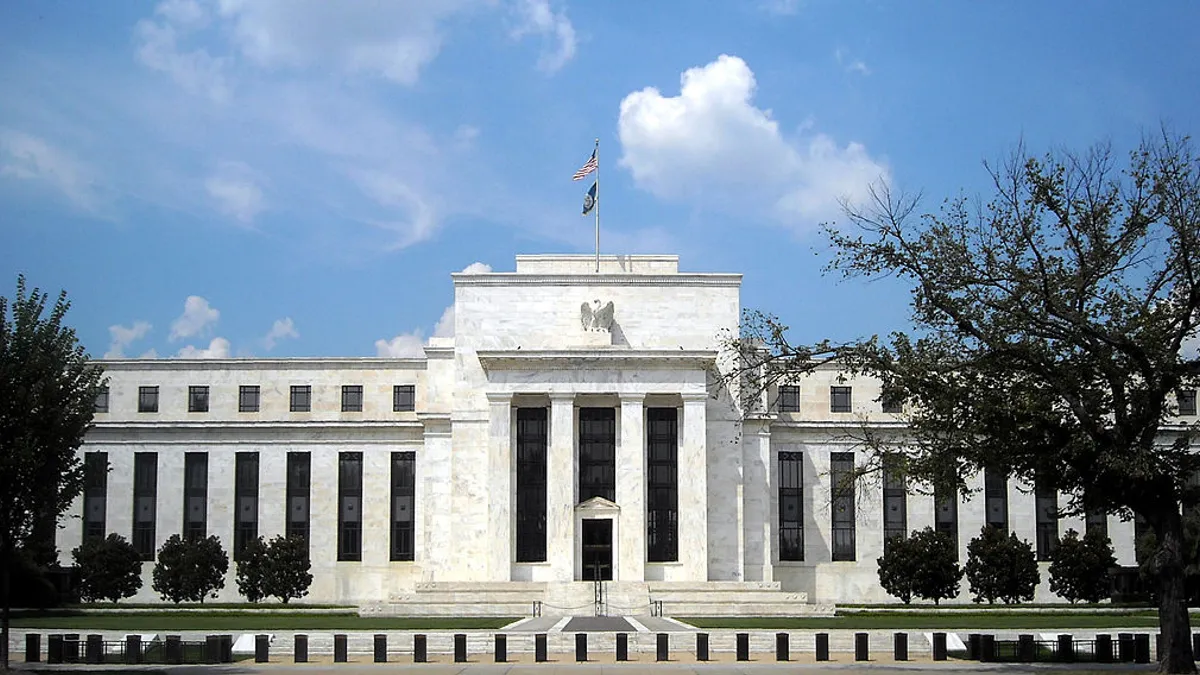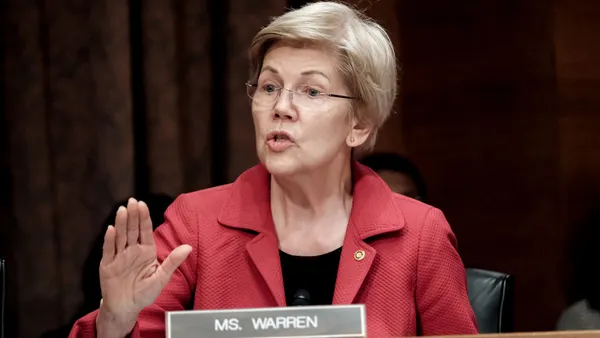Dive Brief:
- The Federal Reserve unveiled its own suggestions Wednesday for revamping the Community Reinvestment Act (CRA), setting up the prospect that banks may have to adhere to different standards, depending on which regulator oversees them.
- In a speech at the Urban Institute in Washington, Fed Gov. Lael Brainard criticized fixes two other regulators proposed last month to the 1977 law meant to curb discrimination against poorer borrowers. She said the approach by the Office of the Comptroller of the Currency (OCC) and Federal Deposit Insurance Corp. (FDIC) risks encouraging banks to meet CRA standards "through a few large community development loans or investments rather than meeting local needs." By contrast, she said, the Fed's plan adds more qualitative standards tailored to local areas.
- Brainard also suggested the other regulators may be rushing their proposal. "If the past is any guide, major updates to the CRA regulations happen once every few decades. So it is much more important to get reform right than to do it quickly," she said. The OCC and FDIC gave the public 60 days to comment on their overhaul instead of the usual 90. Rep. Maxine Waters, D-CA, chairwoman of the House Financial Services Committee, has called on the OCC and FDIC to expand the public comment period to 120 days.
Dive Insight:
Banks are evaluated under the CRA based on a formula that includes loans to homebuyers and small businesses in low- and middle-income areas and the number of branches in so-called assessment areas. Banks that get a low rating may be hit with sanctions that can prevent mergers and the opening of new branches.
The OCC and FDIC’s proposal expands the concept of the assessment area for the digital banking age. Banks that take in more than half of their deposits from areas outside of a physical location, such as a branch or ATM, would be required to analyze the locations of depositors under those regulators’ proposed changes. Areas with a concentration of more than 5% of a bank's deposits would qualify as a new CRA assessment area, and the OCC would require those financial institutions to invest in those communities. The OCC and FDIC plan also clarifies which types of lending and other activities qualify under the CRA.
But Brainard criticized the other regulators' proposal for combining several aspects of CRA evaluation into a single, final score based in part on dollar value. The Fed’s blueprint would emphasize the number of loans banks make in low-income areas rather than the dollar value, she said.
"Dividing evaluations into separate retail and community development tests is important," she said. "The value of these services may vary greatly from community to community. It is difficult to monetize this value in a consistent way relative to the value of lending and investment, thus introducing the risk of skewing incentives inadvertently."
Brainard voiced her preference for unity among regulators. "It's important to eventually find common ground and have one interagency rule. ... But I think we want to make sure that any rulemaking we do, we feel really confident about that rulemaking furthering the core purposes of the statute," she said.
However, analysts noted the deepening rift. "It is a little bit of a war between the regulators," Warren Traiger, senior counsel at the law firm Buckley LLP, told The Wall Street Journal. Traiger advises banks on compliance with the rules.
The OCC declined to comment on the Fed proposal. But Comptroller of the Currency Joseph Otting has made the CRA revamp a high priority, embarking this summer on a tour of low-income areas in five cities to evaluate the potential impact of changes to the rule.
The FDIC said in a statement that it "appreciates the contributions of the Federal Reserve throughout the extensive discussions that were incorporated heavily in the recently released proposal. We look forward to continuing those conversations as the process continues."
The OCC and the FDIC oversee about 85% of CRA activity, while the Fed regulates about 15%. Further complicating the regulatory landscape, the FDIC wants to allow many of the community banks it regulates to follow an older set of rules, making it possible that various banks could ultimately follow three sets of rules.
Brainard said the Fed is still deciding whether to formally release its alternative proposal.
Richard Hunt, president and CEO of the Consumer Bankers Association, told the Journal it should, so that the overhaul could receive public comment.
As it stands, Brainard said, the Fed publicly laid out its approach so that it could be considered alongside the other regulators’ suggestions.












